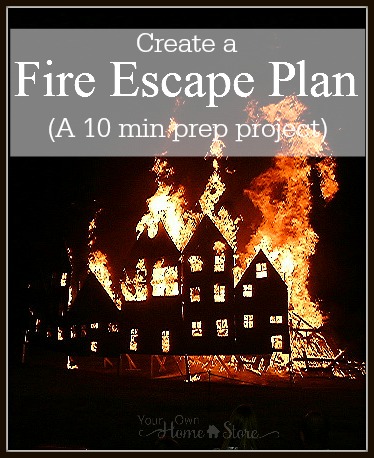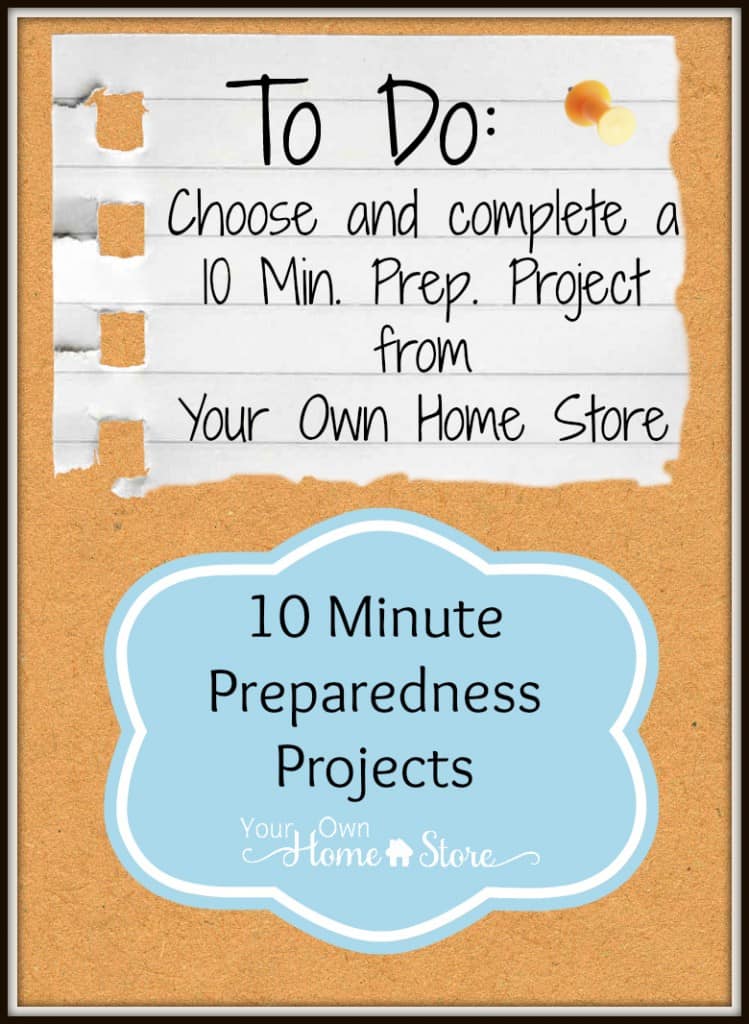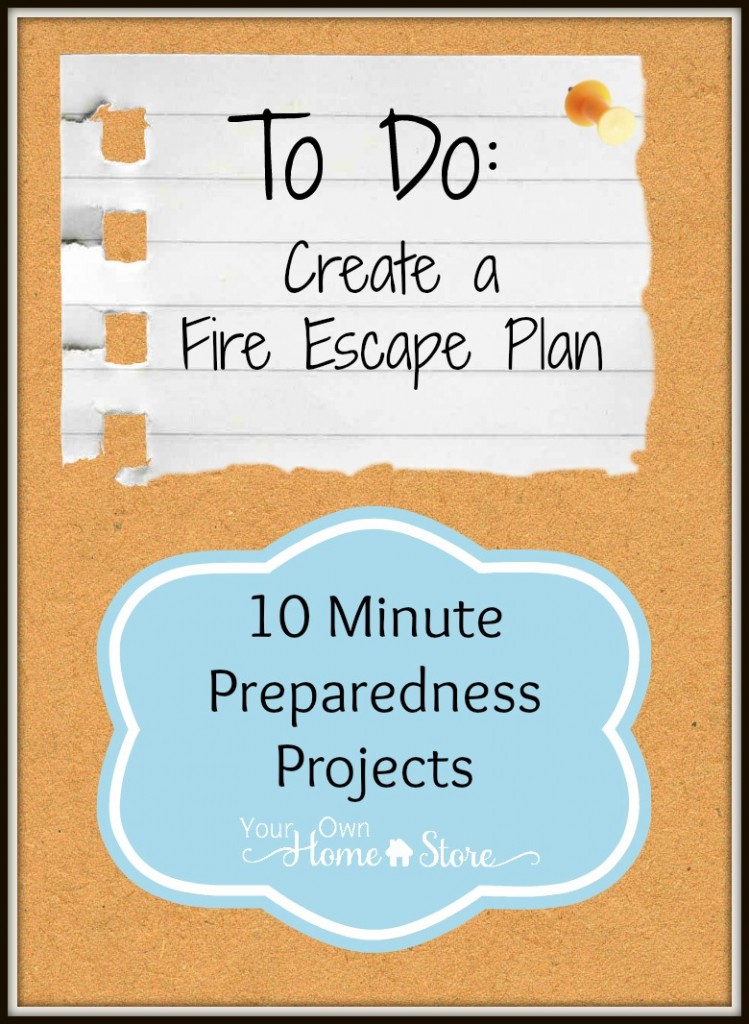I think most of us can admit that we understand how common fires are. However, it’s one of those situations where we assume that it won’t happen to us. We like to believe that we’re cautious and that something like a house fire won’t happen in a million years. I hope that a tragedy like that never happens to you or your family, but the reality is, it could.
Did you know that more than 3,400 Americans die each year in fires, and approximately 17,500 are injured? Fire is scary, and it can spread very quickly and cause horrible damage. In 30 seconds or less, a small flame can get out of control and turn into a massive fire. It only takes a short amount of time for a house to fill with smoke and become completely engulfed in flames. But the saddest part about all this is that many of these deaths and injuries are avoidable.
In the event of a fire, remember – time is the biggest enemy, and every second counts! Escape plans help you get out of your home quickly.
Common Causes Of House Fires
Before I provide my pointers on starting a fire escape plan, let’s discuss the most common reasons for house fires. This list will educate you on what to look out for and hopefully prevent an accident from occurring down the line.
1. Cooking
Everyone spends a lot of time in the kitchen and cooking is a typical cause of fires. Pots and pans get hot quickly, and when they’re left unattended, it’s a recipe for disaster. Pay close attention to your food while you cook and don’t turn the temperature up too high when you’re not in the kitchen.
2. Smoking
It’s best to smoke outside rather than inside your home. It might not be something that you enjoy doing, but it will help keep your house safe from fires. If a cigarette isn’t put out, the butt can stay lit for hours. If it touches flammable material — like a blanket or furniture— it could burst into flames.
3. Candles
Lots of people like to burn candles because they smell amazing and give off a peaceful ambiance. However, you should be careful if you use them. Keep candles away from flammable items like curtains, tissue boxes, blankets, and books. Also, always blow out your candles when you leave the room.
4. Faulty Wiring
If your home has faulty wiring, it’s a major electrical hazard that can cause serious damage. Here are a few signs to look out for:
- Fuses blow on a regular basis.
- The lights dim when you use more than one appliance.
- You have to unplug an appliance in order for another one to work.
5. Barbeques
We all love a good cookout. However, if you grill, keep your smoker away from your home. Make sure it doesn’t come into contact with the tablecloth and other flammable items and check the gas for leaks before you use it.
6. Heaters
I understand if you want to keep warm and save money during the winter, but please be careful using space heaters. A fire can start if it comes in contact with clothing, curtains, furniture, and other flammable items. Also, if you have a furnace, get it checked once a year to make sure it’s working properly.
7. Electrical Equipment
If an appliance has a faulty or torn cord, it can cause a fire. When the power source is overloaded, it creates an abundance of electricity, which causes a fire hazard. Make sure the equipment in your home isn’t torn or frayed.
8. Flammable Liquids
If you have liquids throughout your home or garage such as kerosene, petrol, or alcohol, keep them away from heat sources. Also, make sure that you read the instructions on the container before storing it.
9. Children
Kids tend to get into things that they shouldn’t, so keep lighters and matches out of their reach. Install a smoke detector in their bedrooms and educate them on fire safety.
10. Lightning
Lightning isn’t as common, but it can happen. Unfortunately, it’s not something you can prevent but if your home is struck by lightning, call the fire department. A bolt that hits your attic or the walls of your home can cause fires inside enclosed spaces.
Making a Fire Escape Plan

What You Need to Make a Fire Escape Plan
- Two ways out of each room
- The necessary equipment needed to get out is located near the exits
- A meeting place outside near your home
How to Make a Fire Escape Plan
- Make sure everyone in your family can open the windows in your home
- Check the doors for heat
- Crawl low to the ground if there is smoke
- Close doors as you go to keep the fire from spreading
- Stop, drop and roll if your clothes catch on fire
You can find more info and tips from the US Fire Administration here.
- There you have it! Spend 10 minutes today creating a fire escape plan for your household.
- Then in a day or two, spend another 10 minutes practicing it! Easy Peasy!
I’ve learned that there are lots of reasons that keep people from becoming better prepared or more self-reliant. But as a young mom, one of the top reasons is time or the lack thereof.
But honestly, I don’t think we young moms are alone….
I believe that many of us in our fast-paced society feel that time slips through our fingers on a daily basis. When feeling rushed and anxious, it’s difficult to invest time in becoming more prepared for something that might not happen.
Set Your Fire Escape Plans Into Motion
Now that you’ve decided to create a fire escape plan, you should figure out how to execute it. I have some basic pointers in the section above, but here are some more in-depth instructions:
- Practice Your Plan Twice A Year
You want to keep the plan fresh in everyone’s mind, so one drill isn’t enough. It won’t be necessary to practice more than every six months, but if you want to ask your family members drill questions from time to time, that’s a good idea.
- Do A Drill When Your Family Is Asleep
A fire can occur while everyone is sleeping, so it’s crucial for everyone to know what to do if that happens. Everyone isn’t alert during the wee hours of the night, so having an easy-to-follow plan is your best bet for this scenario.
- Make Adjustments When Necessary
It’s important to keep your escape strategies updated. If your children switch rooms, you add an attachment to your house or remodel, it can affect the way you exit your home. Make sure you’re adjusting your escape plan as you make changes in your household.
Final Thoughts On Creating A Fire Escape Plan
We all hope for the best when it comes to the safety of our home and family. However, we all should take things a step further. It’s not enough to try and be careful around the house and cross our fingers that a fire never happens.
You’ll feel a lot better knowing you have a plan in motion in case anything occurs that can potentially put your family in danger. I’d like to get your feedback. Did you learn anything new from this article? Does your household already have a fire escape plan?
Last but not least, all of us can set aside 10 minutes, right? Every few weeks, I challenge myself to spend a little bit of time on preparedness and self-reliance, and I invite you to join me. It’s so simple!
You can see all the 10 minutes preparedness projects here: 10 Minute (or less) Preparedness Projects.

Becky is a wildlife enthusiast and pet and livestock care expert with a diploma in canine nutrition. With over a decade of experience in animal welfare, Becky lends her expertise to Simple Family Preparedness through insightful info about pets, livestock, bee keeping, and the practicalities of homesteading.



You’ve done a great job with making this clear enough for anyone to understand.
Thanks for sharing. I learn a lot during my HSE training.
Great advice on fire safety. It’s definitely necessary to plan ahead when it comes to fire safety.
We actually ran a survey on our site regarding fire ladders (https://www.top5reviewed.com/the-5-best-fire-escape-ladders/) to figure out which ones were the best. The X-It was voted #1. Definitely a solid option for families and even pets!
THanks for that tip Ryan!